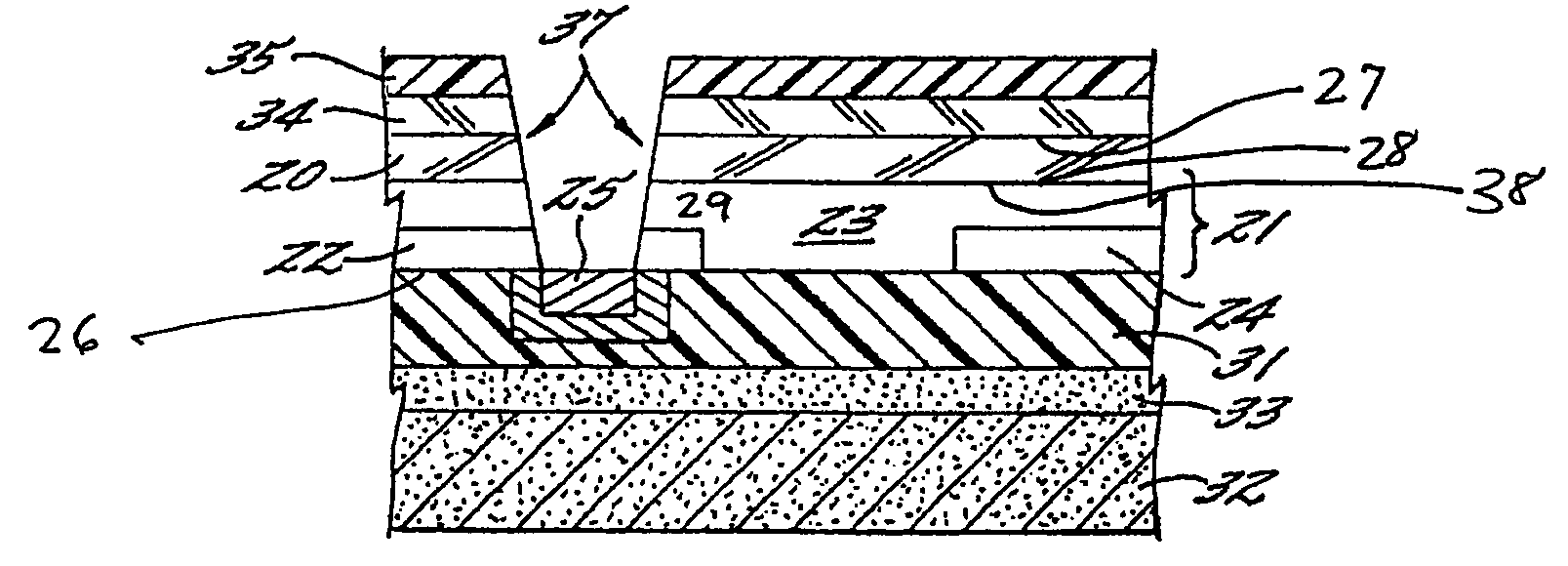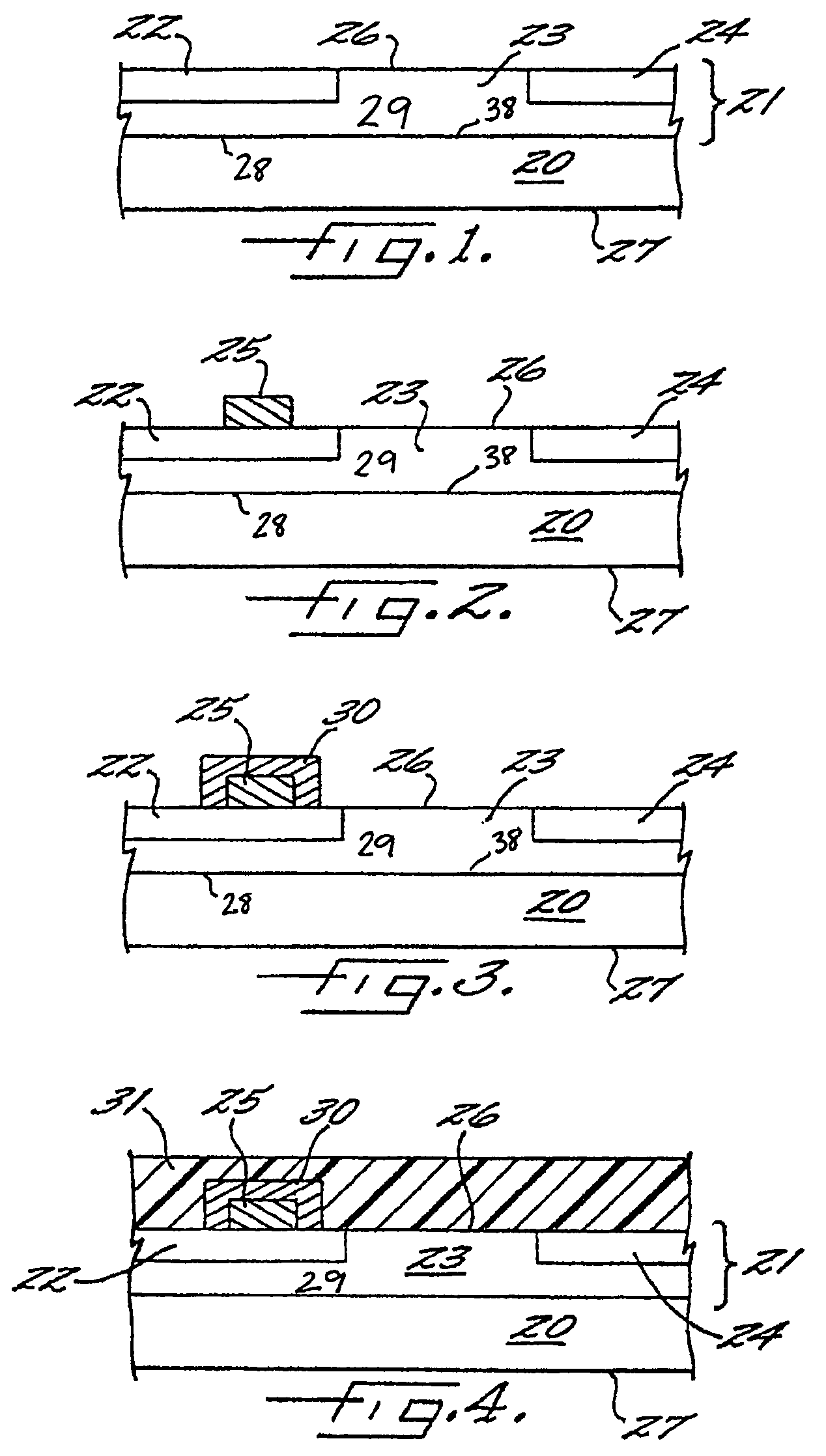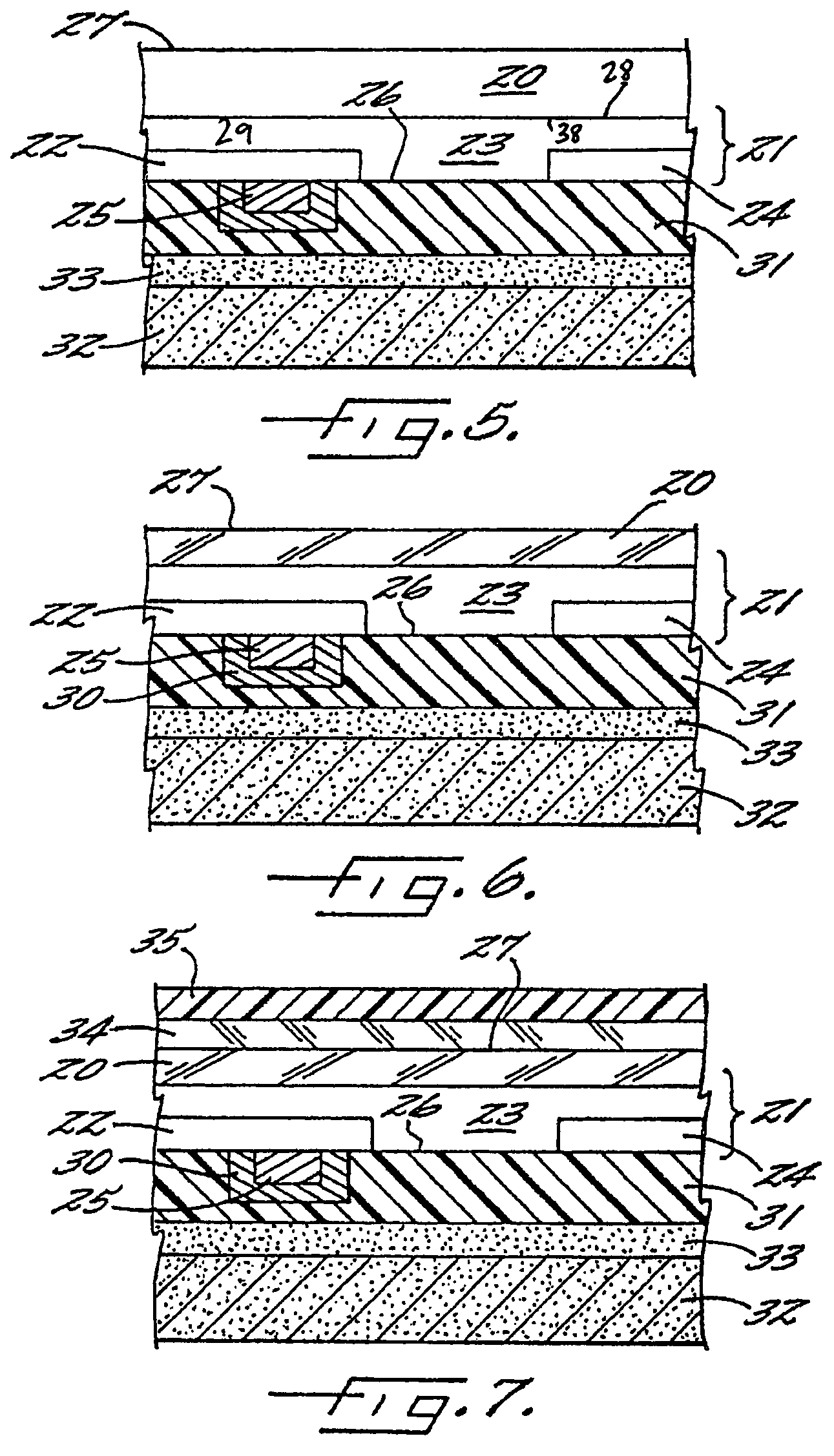Method of forming vias in silicon carbide and resulting devices and circuits
a silicon carbide and via technology, applied in the field of integrated circuits, can solve the problems of limiting the gain that can be delivered at high frequencies, and affecting the performance of silicon carbide devices
- Summary
- Abstract
- Description
- Claims
- Application Information
AI Technical Summary
Benefits of technology
Problems solved by technology
Method used
Image
Examples
Embodiment Construction
[0045]In a first aspect, the invention is a method of forming vias in particular materials—preferably, silicon carbide and Group III nitrides—that enables integrated circuits, and particularly monolithic microwave integrated circuits, to be formed on silicon carbide substrates with epitaxial layers on the substrate. The invention allows the devices to be connected to external circuitry in a manner that reduces the inductance problems that are characteristic of such MMICS when wire bonding is used to form electrical contacts for high frequency devices and circuits.
[0046]FIGS. 1 through 11 illustrate in sequential fashion the basic steps of the method aspects of the present invention. These will be described somewhat generally, following which particular experimental details will be set forth. Because much of the background of MMICs and their function is well understood in this art, these will not be described in particular detail other than as necessary to highlight the invention. In...
PUM
| Property | Measurement | Unit |
|---|---|---|
| frequencies | aaaaa | aaaaa |
| frequencies | aaaaa | aaaaa |
| wavelengths | aaaaa | aaaaa |
Abstract
Description
Claims
Application Information
 Login to View More
Login to View More - R&D
- Intellectual Property
- Life Sciences
- Materials
- Tech Scout
- Unparalleled Data Quality
- Higher Quality Content
- 60% Fewer Hallucinations
Browse by: Latest US Patents, China's latest patents, Technical Efficacy Thesaurus, Application Domain, Technology Topic, Popular Technical Reports.
© 2025 PatSnap. All rights reserved.Legal|Privacy policy|Modern Slavery Act Transparency Statement|Sitemap|About US| Contact US: help@patsnap.com



